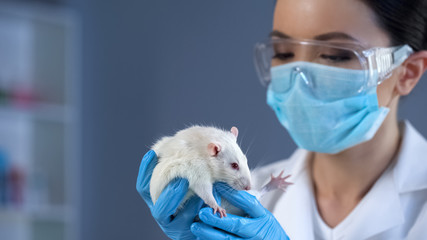
knockout mice
Knock out mice is a mice in which particular gene e.g.
[IL-2 gene] is replaced by muted version of the cell. The first knock out mice
was created by Mario martin and Oliver in 1989 for this received Nobel prize in
2007 knockout mice are general used to study function of particular gene and to
study immune deficiency disorder.
Procedure to create knock out mice
Part A: -Constructed of mutated gene
Gene to be modified. Is selected and isolated. Offer this
similar copies in engineered and constructed with few modifications generally
marker genes are in sorted for modification. These are two types of marker gene.
Neomycin resistance gene with confirm resistance to neomycin is inserted inside
the target gene and tyrosine kinase gene of harpies’ simplex virus with
confirms susceptibility to glancycloveridity in inserted outside the target
gene.
Part B: -Collection of embryonic stem cell`s
Blastocyst
is surgically isolated from the white mouse in the inner site of blastocyst there
is a bunch of cells which known as inner mass. This cell mass is composed of embryonic
stem cell. This embryonic stem cell are isolated and cultured I artificial
media.
Part C: -Insertion of modified gene
Ø
The modified gene is transfected in
the embryonic stem cell by electroporation.
Ø
due to electroporation cell membrane of
embryonic stem cell become pores eana DNA fragment is transferred inside.
Ø
The probability of transfection is very low
generally 1%.
Ø
If the DNA is transferred inside the
cell. There are 2 probability in which the DNA is inserted in the chromosome of
cell i.e. either homologous recombination or by heterologous recombination.
Ø
If homologous recombination mutant gene will undergo
recombination with normal copy of gene present In chromosome. In this case mutated
gene containing neomycin resistant gene will be tyrosine kinase gene will be detected.
Ø
If heterorecombination occur the complete
modified can be inserted anywhere In the chromosome it will contain both
neomycin resistance and tyrosine kinase gene the cell`s which have undergone homologous
recombination are generally heterozygous [i.e. only 1 copies of is replace by mutated
gene while other remines unaffected.
Part D: -Selected of heterozygous cell
Ø
For selection the cells are transferred
on the media, containing neomycin and gancycloveridity.
Ø
normal cells [which are not undergone] homologous
heterologous recombinant. Lack of neomycin resistance gene and hence
will be killed. By neomycin.
Ø
cells which have undergone heterologous
recombinant (which contain neomycin resistance and tyrosine kinase gene will be
killed by glancycloveridity.
Ø
cells which have undergone homologous
resistance gene will survive in this media because they are resistance to both neomycin
and glancycloveridity.
Part E: -Implantation of modified embryonic
Ø
The modified cells [heterozygous for
target gene] are transferred to blastocyst from gray mice and this blastocyst
is then planted to the uterus of faster mother or pseudo pregnant mother.
Ø
This mother uses give birth to two
types of progeny. Chimeric progeny (produced from two different embryonic stem
cells) and grey progeny.
Ø
Then progeny is then crossed with
grey progeny this will give birth to some white progeny which are heterozygous for
target gene.
Ø
This progeny is again interbred which
will finally give birth to homozygous. White progeny which have both the copies
of target gene mutated.
Ø
In this way both the copies of target
gene are made non-functional.
Application of knock out mice
Ø
Knockout mice have been useful
include studying and modeling different kinds of cancer, heart disease, arthritis
substance, abuse, aging and perkiness disease.
Ø
Knockout mice also offer a biological
and scientific contact in which and other therapies can be developed and tasted.



Comments
Post a Comment